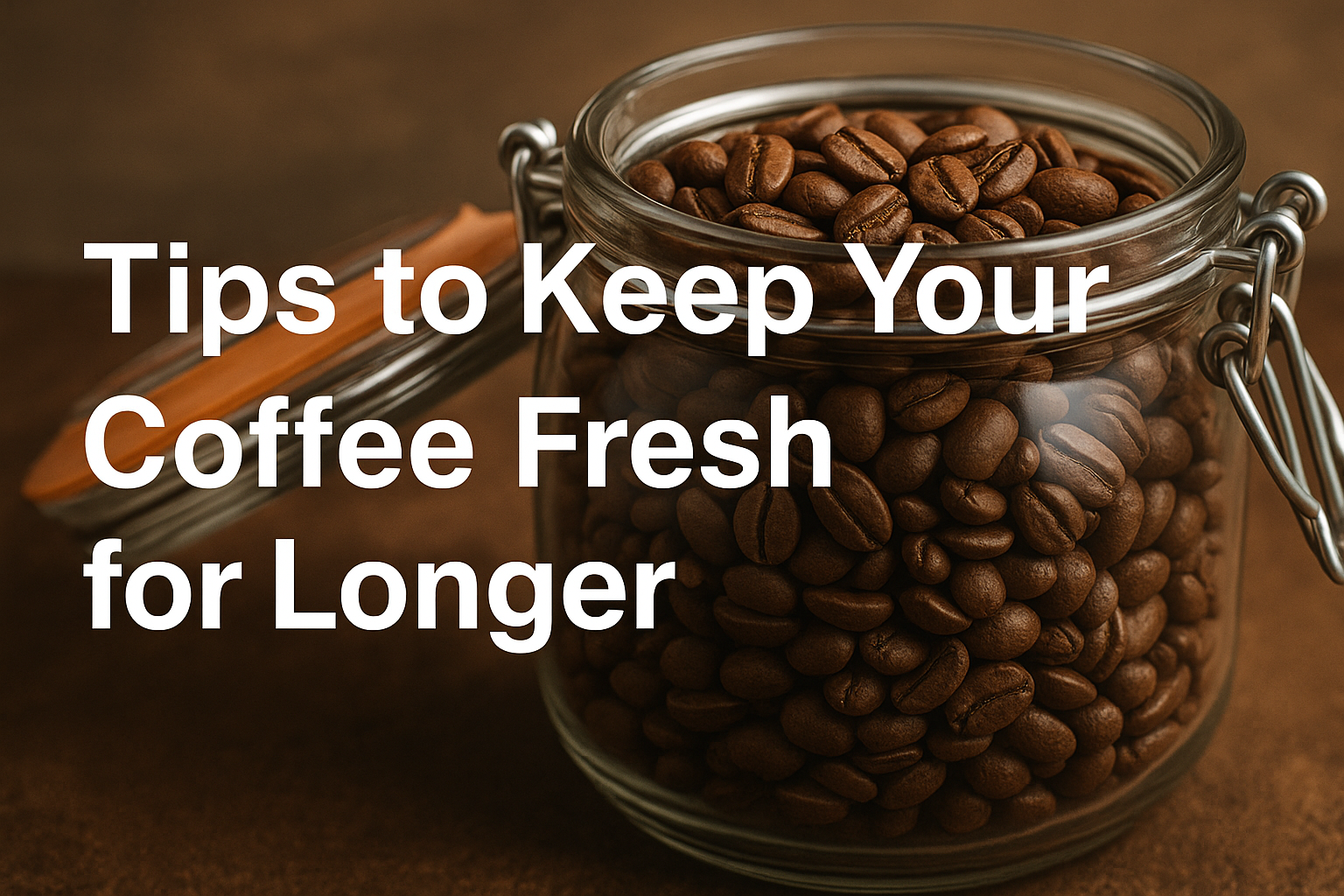For coffee lovers, freshness is everything. The difference between a rich, aromatic cup and a dull, lifeless one often comes down to how fresh the coffee is.
From the moment coffee beans are roasted, they begin to lose their flavor and aroma due to oxidation and exposure to moisture.
Proper storage and handling can make all the difference in maintaining that just-roasted taste. Here’s a complete guide to keeping your coffee fresh for as long as possible.
Why Freshness Matters
Fresh coffee delivers more than just caffeine—it offers complex aromas, a balanced flavor profile, and a pleasant mouthfeel.
When coffee loses freshness, it becomes stale, losing its sweetness and acquiring a flat or bitter taste. Preserving freshness is key to getting the most out of your beans or grounds.
Buy Whole Beans Instead of Ground Coffee
Grinding coffee speeds up the oxidation process because it exposes more surface area to air. Whole beans stay fresh longer since the interior remains protected until you grind them.
Invest in a good burr grinder to grind your beans just before brewing for maximum flavor retention.
Store Coffee in an Airtight Container
Exposure to air is one of the biggest enemies of coffee freshness. Always store your beans in an airtight container to reduce oxygen contact.
Look for containers with one-way valves that let carbon dioxide escape while keeping air out. Avoid leaving coffee in its original paper or thin plastic bag once opened.
Keep Coffee Away from Light
Direct sunlight or even bright indoor light can degrade coffee quality over time. Light causes chemical changes in the beans, leading to a stale flavor.
Store your coffee in an opaque container and keep it in a dark cupboard or pantry.
Control Temperature and Humidity
Coffee should be stored in a cool, dry place. Heat accelerates the breakdown of the delicate oils and compounds that give coffee its flavor, while moisture can cause mold and ruin the beans.
Avoid keeping coffee near ovens, stovetops, or windows, and never store it in the refrigerator—condensation can damage the beans.
Freeze for Long-Term Storage (With Care)
Freezing coffee can extend its freshness if done correctly. Divide your beans into small, airtight portions before freezing so you only thaw what you need.
Avoid repeated thawing and refreezing, as this can cause moisture buildup and flavor loss. When ready to use, let the beans come to room temperature before grinding.
Buy Smaller Quantities More Often
Even with perfect storage, coffee loses freshness over time. Buying smaller amounts more frequently ensures you’re always using coffee at its peak flavor.
Aim to buy what you can consume within two to four weeks after roasting.
Avoid Pre-Flavored Coffees for Long Storage
Flavored coffees often have added syrups or oils that can shorten shelf life and mask freshness issues. If you enjoy flavored coffee, consider adding flavors yourself at the time of brewing instead of buying pre-flavored beans.
Signs Your Coffee Has Gone Stale
- Flat aroma: Fresh coffee smells vibrant and complex, while stale coffee has a weak or cardboard-like smell.
- Bland taste: Loss of sweetness and complexity, with an unbalanced or bitter flavor.
- Oily or rancid smell: Indicates that the coffee oils have gone bad due to oxidation.
Bonus Tip: Invest in Quality Storage Solutions
For serious coffee drinkers, specialized coffee storage containers with vacuum sealing or built-in CO₂ valves can make a noticeable difference. While they require a small investment, they can significantly slow down the staling process.
Final Thoughts
Keeping coffee fresh is all about controlling its environment—protecting it from air, light, moisture, and heat.
By buying whole beans, storing them properly, and grinding them just before brewing, you can extend the life of your coffee and enjoy richer, more satisfying cups every time.
A little care goes a long way in preserving the magic of your favorite brew.
